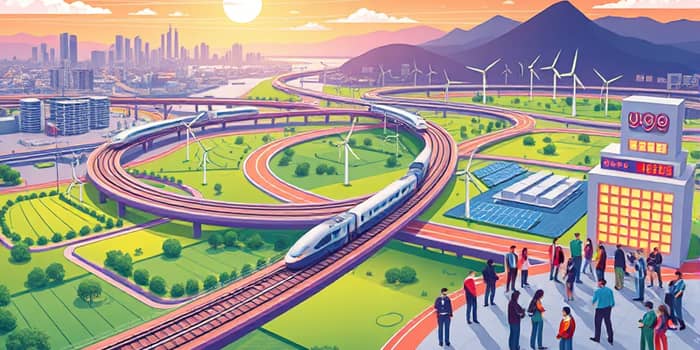
As the world emerges from economic challenges and looks toward a sustainable future, infrastructure investment stands at the heart of transformative growth. Strategic funding in roads, energy grids, digital networks, and social facilities is not merely construction—it is the blueprint for productivity, inclusion, and resilience.
Infrastructure investment refers to the allocation of capital toward foundational systems—transportation, power, water, waste management, digital connectivity, and social amenities. These critical economic multipliers amplify growth: every dollar invested can generate $1.50 in GDP over a multi-year horizon. Historic data underscore how robust infrastructure underpins innovation, business expansion, and quality of life.
The world faces an enormous financing challenge. Between now and 2040, an estimated $106 trillion is required to meet global needs:
As of 2023, only $79 trillion has been committed, leaving a $15 trillion shortfall. This gap jeopardizes growth, job creation, and climate adaptation worldwide.
Investment in public infrastructure yields high output multipliers, typically ranging from 1.3 to 1.7 across regions and sectors. In practical terms, a $100 billion infusion can boost GDP by $150 billion and create around one million jobs. These effects are especially potent in emerging economies, where underdeveloped networks hold untapped potential.
Beyond immediate job creation, long-term studies reveal that every $100 invested elevates private-sector output by $13 to $17, driven by improved logistics, reliable power, and modern facilities. Higher productivity translates to rising wages, increased business competitiveness, and broader social benefits.
Private and public actors alike are navigating a dynamic environment:
Investor sentiment remains optimistic, with 86% expecting deal growth in 2025, up from 77% in 2024. Yet policy uncertainty and higher borrowing costs in some regions temper the pace of commitments.
Three core themes are guiding capital flows:
A diverse capital mix is essential. Developed economies often rely on public funding, though PPP structures have risen in the UK and France. In the United States, public capital remains prominent, but private investors eye core+ and value-add strategies for stable returns.
Despite a challenging fundraising environment in 2023, 2024 saw a 14% year-on-year increase in infrastructure capital raises. Greenfield projects and sustainable investments now account for a larger share, reflecting a shift toward long-term, resilient portfolios over opportunistic plays.
Beyond dollars and jobs, infrastructure reshapes societies. Reliable water and power supply lifts households out of poverty, while safe roads and efficient transit connect communities and markets. Social facilities—schools, hospitals, community centers—foster equitable growth and human capital development.
Environmentally, modern infrastructure integrates low-carbon materials, smart water systems, and nature-based solutions. Such investments mitigate climate risks and safeguard ecosystems, ensuring that growth today does not compromise tomorrow.
Several factors will influence the road ahead:
• Inflation and rising interest rates can slow project financing, as borrowing costs climb.
• Regulatory frameworks—national infrastructure plans, data-center energy codes—shape project feasibility.
• Geopolitical tensions, trade disputes, and supply chain disruptions pose risks to material availability and cross-border deals.
Effective governance, transparent procurement, and flexible financing structures are vital to managing these uncertainties and ensuring projects deliver intended benefits.
Closing the infrastructure gap is not optional—it is an economic and moral imperative. With $106 trillion needed by 2040 and a persistent $15 trillion shortfall, stakeholders must collaborate across public and private spheres. Strategic investments yield sustainable growth, job creation, and climate resilience.
By prioritizing energy transitions, digital expansion, and resilient social infrastructure, governments and investors can pave the way for an inclusive future. The time for action is now: harness the power of infrastructure to drive prosperity, equity, and environmental stewardship for generations to come.
References





